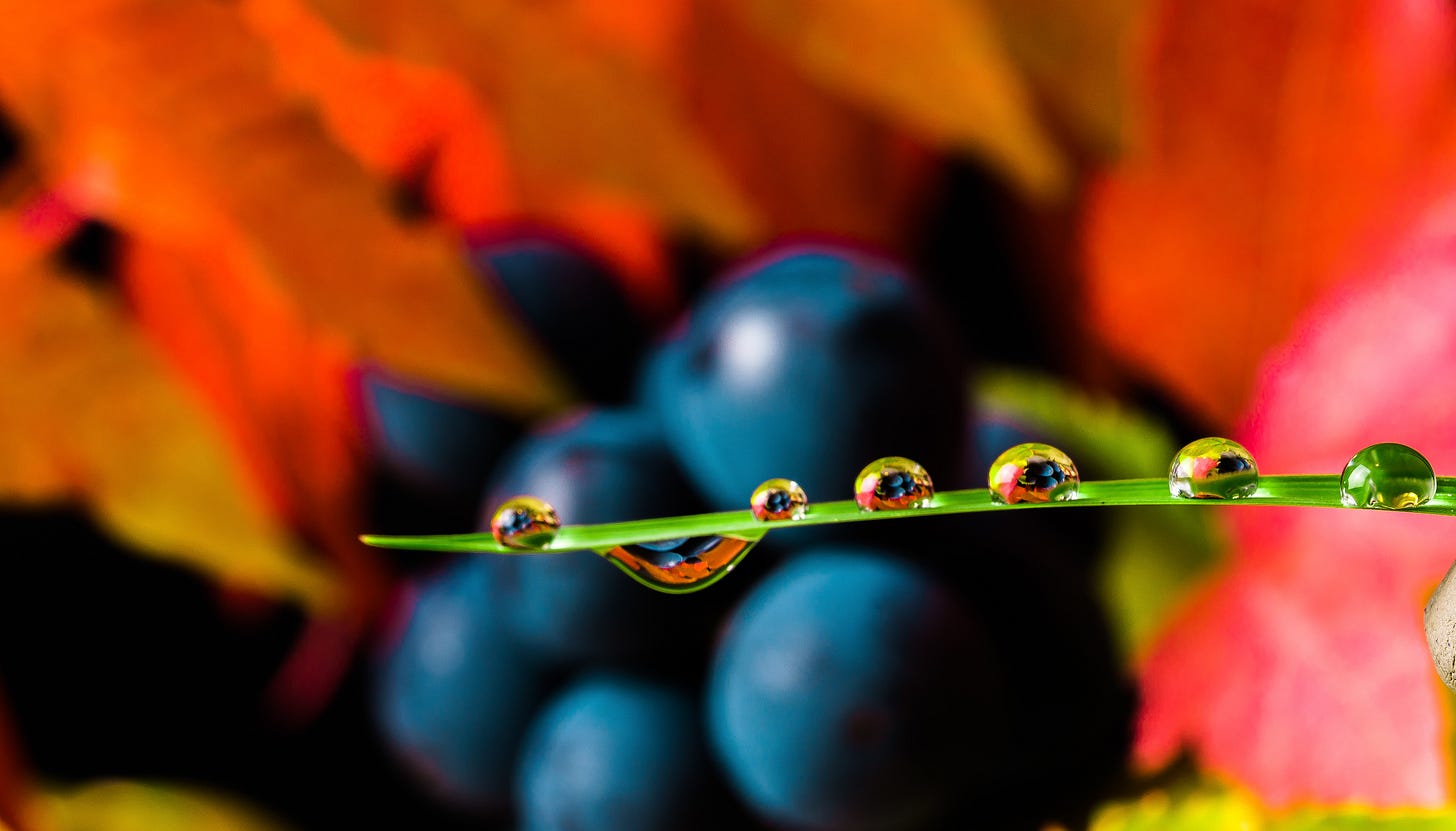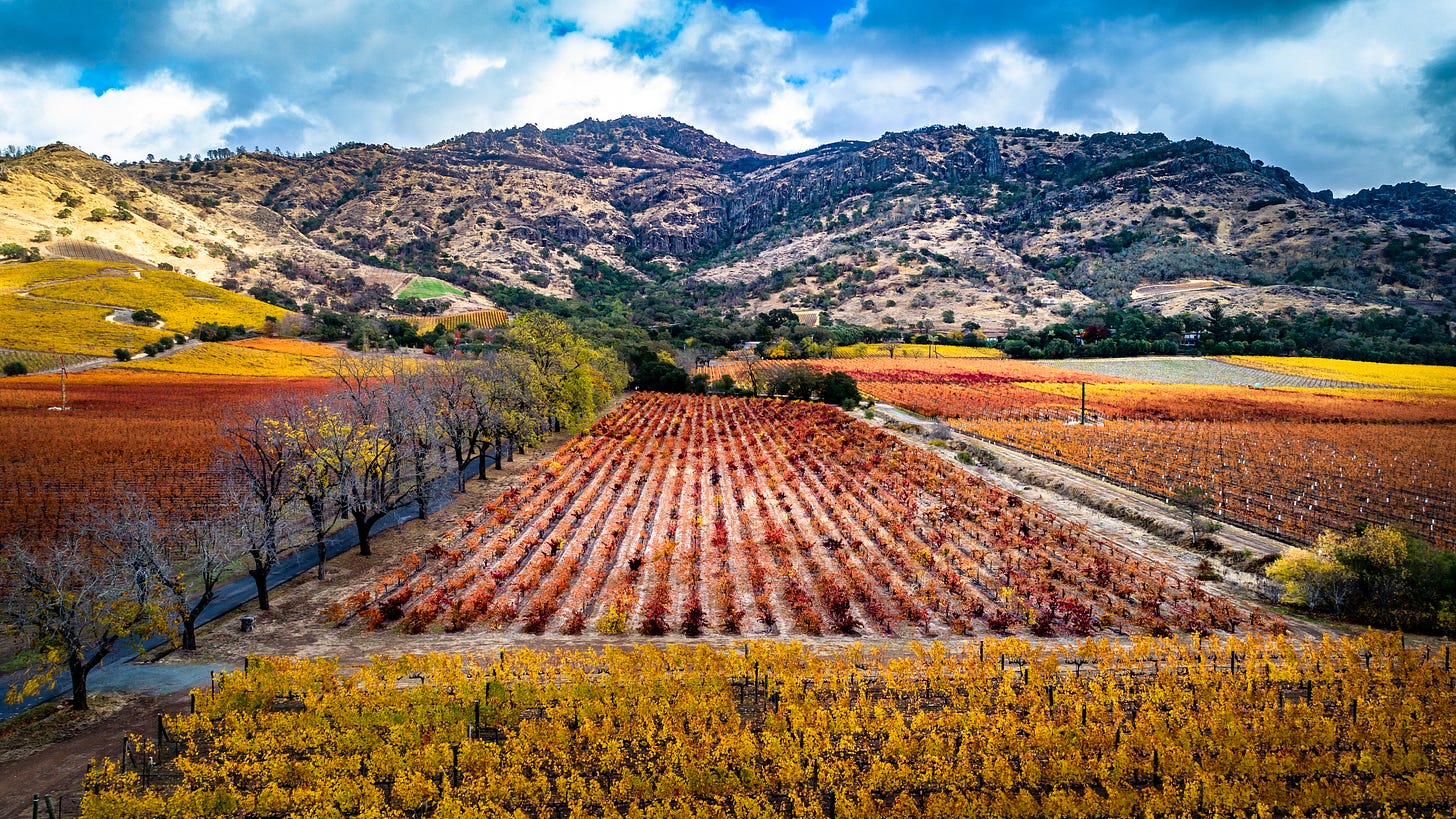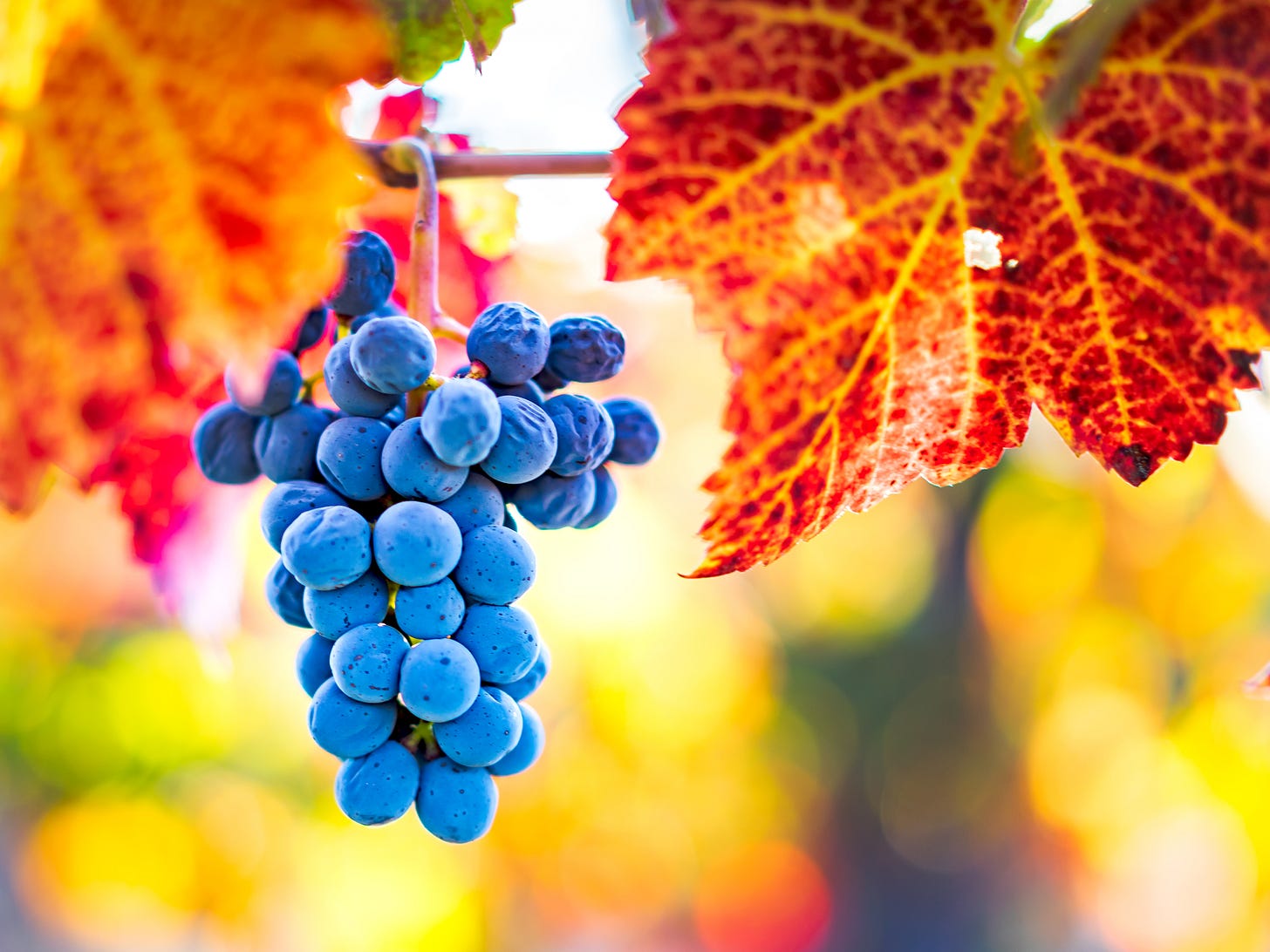As 2023 draws to a close, we're dedicating the final two weeks to a retrospective countdown of the year's most-read stories. Spanning a broad spectrum of subjects, these pieces mirror the varied curiosities of our audience and pave the way for an exciting 2024. Join us as we revisit these highlights.
Original run date: Oct. 13, 2023
In the third piece in a series, we explore how the Napa Valley’s current environment may indicate an economic bubble. Previously we delved into the ramifications of severe supply and demand imbalances, illustrating how they can be the catalyst for rising legal disputes, community strife, and business failures and how inadequate or incomplete data can compromise strategic decision-making and impact long-term planning.
NAPA VALLEY, Calif. — The Napa Valley wine industry, rooted in a rich heritage that dates back to the 19th century, is showing signs of economic vulnerability. Although this renowned wine-producing region has successfully navigated a range of challenges — from economic downturns to devastating outbreaks of phylloxera — its recent trajectory has been marked by rapid growth. This is especially evident in the rising costs of cabernet sauvignon grapes.
However, such surging prices may be more symptomatic of emerging challenges than a signal of enduring prosperity. A series of red flags is emerging, from shifts in consumer preferences to an increasingly crowded market of wineries and hotels. Add to that constricting credit markets, a slowdown in tourism, the rise of alternative wine destinations and an increase in corporate acquisitions of family-owned wineries, and the industry appears to be entering a period of turbulence.
Summary of key points found in this article:
The Napa Valley wine industry experienced boom-and-bust cycles since the late 1800s; revival in the 1960s.
Global recognition of the region led to rapid expansion in hospitality and wineries.
Cabernet sauvignon grape prices surged 503% from 1989 to 2022, raising concerns of overexuberance.
Second significant surge in market participants in the last decade.
Decline in tourism; hotel occupancy rates have dropped.
Shifting consumer preferences away from wine.
Credit markets tightening; increase in credit-card delinquencies.
Rise in corporate acquisitions of family-owned wineries.
Intensifying competition from other American Viticultural Areas and global wine regions.
Several external variables contribute to an uncertain future, including market saturation, inflation, geopolitical unrest, elevated energy costs and lingering pandemic effects.
Signs point to the industry being in a potential economic bubble.
Historical overview
California's accession to statehood on Sept. 9, 1850, served as a significant milestone for the nascent wine industry. The Napa Valley quickly became the crucible of winemaking in the state, propelled by pioneers such as John Patchett, Henry Walker Crabb and Joseph Osborne, who were instrumental in introducing Vitis vinifera grapes to the area. With a state economy invigorated by the gold rush, an influx of immigrants and diverse industries ranging from the fur trade to lumber, the Napa Valley became an important center of viticulture. Nearly 200 wineries and 18,000 acres of grapevines proliferated across the valley floor by the late 1880s.
Yet the valley's fortunes took a dramatic turn for the worse in the 1890s. A combination of factors — wine surplus, drought, phylloxera, changing public sentiments regarding alcohol and numerous banking crises — caused a seismic shift in the region's agricultural focus. Vineyards were abandoned or converted into orchards for prunes and walnuts. Desperate for financial solvency, Crabb — the original owner of the famed To Kalon vineyard — attempted to stave off ruin by selling land and securing a substantial loan of $41,000. Unfortunately, his untimely death months later marked the decline of the early Napa wine industry. The valley's winemaking operations dwindled to a mere handful by 1905, and grape cultivation shrank to a sparse 2,000 acres.
For decades, the valley remained in this state of stasis until the 1960s, when a new generation of vintners sensed an opportunity for revival. Bolstered by public interest and capital from affluent investors, the number of wineries multiplied, reaching close to 300 by the mid-1970s. Events such as the 1976 Judgement of Paris, where Napa Valley wines outshone their French counterparts in a blind taste test, further solidified the region's standing on the global stage. This newfound prestige fueled a surge in tourism and led to the establishment of an array of hospitality venues to accommodate the valley's many visitors.
The current landscape
Today, the overwhelming majority of Napa Valley's agricultural land is allocated to vineyards, with a particular emphasis on cabernet sauvignon grapes. Why? Economics. In 1989, these grapes sold for an average cost of $1,474 per ton. By 2022, the price had surged to $8,900 per ton. This contrasts sharply with the $2,853 per-ton average in adjacent Sonoma County. The numbers reveal a staggering 503% increase in price since 1989, corresponding to a compound annual growth rate of over 6%. Notably, grapes from the To Kalon vineyard — now owned by Andy Beckstoffer — command prices far above this average; buyers have been known to pay upward of $40,000 per ton for this highly-regarded product.
This inflated pricing has many convinced that the grape market is healthy, while others believe it is a clear sign of volatility and a potential economic bubble.
Bubbles: causes, consequences and historical context
Economic bubbles happen across various asset classes and regions, leaving deep marks on global and local financial markets and economies. These phenomena have a long history, with prominent instances including Tulip Mania in the 1630s in the Netherlands, the South Sea Bubble of 1720 in England, and the Mississippi Company Bubble of the same year in France. In the 1840s, Britain experienced Railway Mania, leading to an unsustainable spike in railway investments and a subsequent market crash. Fast-forward to the 20th century, the excesses of the Roaring Twenties contributed to the Great Depression in the United States, while Japan's asset bubble in the late 1980s and early 1990s led to an extended period of economic stagnation, colloquially known as the "Lost Decade." More recent examples include the dot-com crash of 2000 and the U.S. housing bubble in the mid-2000s. In the last decade cryptocurrency crash, the 2015 downturn in the Chinese stock market and the ongoing real estate downturn in China have added volatility to global markets.
Financial bubbles frequently follow a similar life cycle: a significant surge in prices attracts a surge of new market participants, which is ultimately followed by a precipitous decline when the unsustainable nature of the growth becomes apparent.
Price inflation is the most conspicuous indicator of an economic bubble, yet it rarely stands alone. Other symptoms often include a rapid influx of new, often under-capitalized entrants, undue optimism, herding instincts, lax lending conditions and weak regulatory oversight. Speculative investment also plays a significant role, with investors often ignoring the asset's intrinsic value. Collective behavior among investors, propelled by a fear of missing lucrative opportunities, can exacerbate the bubble's expansion. Additional factors such as excessive leveraging of investments, imbalances between supply and demand, and broader macroeconomic conditions like low interest rates can contribute to the bubble's formation. Therefore, a comprehensive understanding of an economic bubble requires more than just observing elevated prices.
The collapse of an economic bubble usually ensues when the asset can no longer sustain its lofty valuation, resulting in a sudden and often devastating market correction. During this phase, investor psychology often shifts from a fear of missing out (FOMO) to a fear of losing everything (FOLE), accelerating the bubble's implosion. The ramifications of a burst bubble are not limited to individual investors; repercussions often extend further to induce recessions, market downturns and occasionally, full-scale financial crises.
Is Napa Valley's wine industry in a bubble?
Are soaring prices of cabernet sauvignon grapes in Napa Valley indicative of an industry bubble? While high prices alone may not signal a bubble, a range of other factors seems to increase this possibility.
Once the second-most popular alcoholic beverage in America, trailing only beer, wine has now lost ground to spirits. This shift is especially pronounced among younger consumers, who are increasingly opting for non-alcoholic beverages and craft cocktails. Societal trends such as the wellness movement and a focus on healthier living are further accelerating the decline in wine sales.
The supply side presents its own set of challenges. Napa Valley boasts more than 900 physical wineries and hundreds of virtual operations, the near majority of which have been established in the last 10 years. A report from Napa’s Economic Development Division shows a possible lodging glut. According to their projections, the number of hotel and resort rooms in the region is set to double, rising from 2,365 in 2019 to an estimated 4,767 in the near term.
Concurrently, Federal Reserve data indicates that a growing number of consumers are becoming delinquent on their credit card debt and that a growing net percentage of domestic banks are tightening loan standards for businesses, pointing to a more restrictive credit environment.
Napa Valley's tourism sector, which was once a steadily growing industry, has also hit a rough patch. Hotel occupancy rates have seen a decline, dropping from 71.7% in 2019 to an estimated 61% in 2023.
Compounding these issues is the changing landscape of winery ownership. Numerous vineyards and wineries founded in the 1970s have either closed down or transitioned to new owners. Larger corporations are steadily acquiring family-owned operations, and this consolidation trend shows no signs of slowing. Furthermore, competition is intensifying on a broader scale, with 249 other American Viticultural Areas in the United States and emerging wine regions globally vying for market share.
When considered collectively, these factors place Napa Valley's wine industry at a pivotal point. Though the specter of an industry collapse is not inevitable, several indicators raise concerns. Market saturation, evolving consumer tastes, tightening credit conditions and external variables — such as inflation, geopolitical unrest, elevated energy costs and lingering effects of the pandemic — are all contributing to an uncertain future for this storied wine region. As Napa Valley reaches this critical crossroads, questions loom: Will the industry continue its growth trajectory, or will it experience stagnation or even decline? Only time will provide the answer, but the clock is undeniably ticking.
Tim Carl is a Napa Valley-based photojournalist.









Tim, I love your analysis on this. In addition to the challenges you have highlighted mostly regarding DtC and hospitality, wineries also face an uphill battle navigating the increasingly complex distribution quagmire. Over the past decade, Southern/Glazers has dominated the distributor landscape, creating a stronghold on many aspects of the business. If aligned with them, the struggle involves vying for attention among their immense portfolio, including the huge and well-funded spirits brands (these spirits company's influence permeates SGWS even if your wine brand is in a different "sales division"). If not partnered with them, your chosen distributors inevitably face an uphill battle against this growing behemoth. Even gaining traction with a distributor doesn't guarantee success, as the retail landscape, influenced by Total Wine, is swiftly changing. Then, the once-reliable on-premise channel, especially for premium wines, has been severely impacted by Covid-induced changes in that channel. There are undeniably turbulent times ahead—some will endure, but sadly, some will not make it through.
BTW... I just subscribed after reading yet another great article. Thank you!